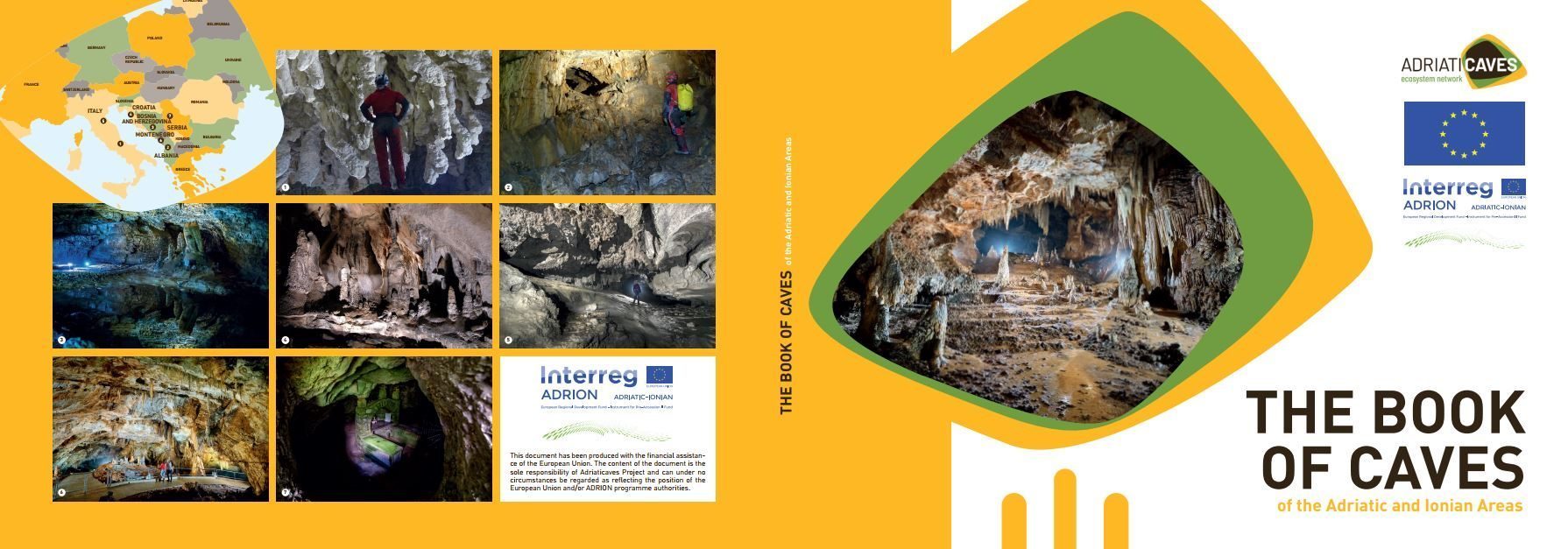Caves are fascinating places that make us walk in the geological eras. Caves are fragile and complex ecosystems that tell us of the innumerable variations that the Earth has had and still has in the water cycle, a vital element that join all living beings. Caves are the kingdom of silence and darkness hosting unique and unrepeatable organisms. The main purpose of the Adriaticaves project was to combine scientific investigation of these habitats worthy of protection with sustainable tourism methods identification, suitable to respect the hypogeum both through appropriate regulation of accesses and with the use of equipment to reduce the long-standing problems of overcrowding and light pollution in tourist caves. Adriaticaves is a project of the “Interreg Adrion” EU program.
The lead partner is Majella National Park, located in the central Apennines, in a mountainous area of about 740 km2 The Park, which aspires to the UNESCO designation of Global Geopark, boasts 95 geosites. Due to karst phenomena 115 caves are found here and epgean karst landforms, like dolines, sinkholes, karren etc. are diffuse. Many of these caverns have a cultural interest as they were frequented by prehistoric man and animals, hermits and shepherds. Other project partners are protected landscape “Bijambare” in the northeastern slopes of the Canton Sarajevo, Velebit Nature Park – the largest and most complex protected area in Croatia (200,000 ha), The Authority for the Management of Parks and biodiversity – Romagna (public institution for entitled for the management of protected natural areas of the “Romagna Macroarea”). Lipa cave as the only valorized cave in Montenegro open for visits is a part of the project. Besides these, two municipalities are also project partners; Skadar as an Albanian important educational and industrial center, and the city of Čačak as an important tourist destination in Serbia.
The main objective of the Adriaticaves EU project (n. 608), conceived and structured by Massimiliano Costa, is to promote natural and archaeological heritage of the ADRION area karst landscapes, focusing on the sustainable development of accessible caves. It aims to create new professional figures while improving socio-economic conditions of mountain areas, sharing best management practices of karst areas among the project partners. Numerous caves which represent heritage of unique value, both scientific and natural terms.
- In Albania, the following caves stand out: Gajtan, Hus, Boga Valley, Jubanit, Kataraktit, Waterfall Cave, Kaurri, Arabian peak (one of the largest in the Balkans), Muriqit cave, and Zhyles cave. All caves in Albania have scientific, didactic, and touristic value.
- In Bosnia and Hezegovina Vjetrenica cave stands out as one of the richest caves in the world in terms of biodiversity. Officially, it’s in second place with 85 troglobites.
- Croatia is also home to numerous caves of exceptional value. Due to unique beauty and numerous ancient findings, Cerovac caves received legal protection in 1961as geomorphological natural monument. Jama Baredine is a geomorphological monument of nature since 1986 and it was opened for visits in 1995. Additionally, Baraćeva and Manita peć cave are opened for visitors, and Modrič cave is a valuable paleontological and archeologic site. Besides them, Samograd and Vetrenica cave are Croatia’s important geomorphological monuments of nature.
- Italy is home to caves which have been known of since ancient times. Due to their biodiversity, the following caves stand out: Re Tiberio, Onferno, Ca ‘Toresina, Cavallone, Praje, Black cave- an international geosite due to its rarity. Also, caves Scura, Luppa, Monte Cucco, Oliero, and Torri di Silvia are extremely important monuments of nature. The Stiffe Caves are the natural resurgence of the Rio Gamberale, the place where the stream comes out after a subterranean course. It is the only “active” cave in Italy, among tourist ones. The inside path includes 150 stairs.
- In Montenegro, Lipa cave is the only opened for visits and since 2015 has been offering unforgettable tours conducted by trained guides. In the past, Lipa cave was explored by notable experts in the field of speleology and amateurs and adventurers. The cave is preserved in accordance with high environmental standards.
- Serbia is a country where caves which offer a unique sensation to admirers of natural and historical values can be found. The ones which stand out are: Kadjenica, Hadži Prodan’s cave, Ceremošnja, Ravništarka, Rajkova cave, and Potpećka cave.
- Postojna Cave is the best-known cave in the world. It is also the greatest tourist attraction in Slovenia and one of Planet’s largest karst monuments.
Fascinating, mysterious, enchanting: caves are an attraction factor for tourist flows. The Adriatic-Ionian (ADRION) area is a well-established tourism destination especially in summer, with respect to other periods of the year. However, potentialities for developing all year tourism destinations are many. Natural, cultural and historical heritage sites can play an important role in promoting tourism all year round.
Caves, even more tourist caves, represent identity places for territories and local communities, which deserve maximum protection, flanked by effective environmental education measures in order to make accessible to all the most relevant aspects of scientific knowledge about Earth history. A “true sustainable development” is the transmission of resources to future generations with its three fundamental components: ecological, economic and social; in this perspective, the Adriaticaves project has certainly kicked off a great process of connection with all local players, which lead to the discovery of the natural and cultural beauties of karst systems.




